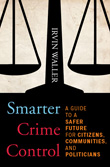The prize winning victim advocate – Jan van Dijk – uses data from the international crime victim survey (ICVS) to call on governments to prevent violence by restricting access to beer, making handguns less available, and encouraging householders to take precautions against residential burglary.
On June 12, the government of Sweden awarded its prestigious Stockholm prize for contributions to evidence based criminology to Jan van Dijk – the renowned Dutch and international expert on crime prevention and victim assistance. Here are the highlights of his conclusions from his key note lecture – with some cautions from my perspective:
1.The more beer consumed per capita, the higher the rates of assault per capita – so North American policies on restricting alcohol are better than those in Western Europe;
OK governments should follow his advice. But North America should not be let off the hook as alcohol is also a major contributor to both interpersonal violence and road crashes in North America. So, more is needed than great policies like those in Ontario and some US States that reduce alcohol in drinks, provide training for servers in bars, increase age for persons to buy alcohol, or increase the tax on alcohol.
2.Rates of handgun ownership correlate highly with violence; rates of long gun ownership bear no relationship to levels of violence; and hand gun ownership increases risk of personal victimization – so European and Canadian policies on restricting availability of handguns are better than those in the USA;
OK governments should follow his advice. But in the USA, strategies such as the Boston gang strategy (see Less Law, More Order, pp. 80-82) were successful because they diagnosed the problem before acting and then combined ¨individualised deterrence¨ with ¨youth outreach¨ without changing gun laws. Both Canada and the USA have regrettably lived an upsurge of gang related homicides, often executed with illegal handguns. So more diagnosis and social prevention are also needed.
3. Reducing the opportunity for some crimes, such as ignition locks in cars and alarms in homes may reduce car theft and burglary in some European and North American countries;
OK governments should follow his advice. But, in my seminal study on burglary, I combined victimization data with social data. The conclusion is clear that it is not just the ease of the opportunity to commit the offence but also offender related variables such social disadvantage that determine crime rates. The best proven reductions in residential burglary such as Seattle in the 1970´s and Kirkholt did not use alarms but did use collective efficacy (see Less Law, More Order, pp. 54-58). The Winnipeg auto theft suppression strategy achieved at 87% reduction. They were all based on a problem analysis that lead to action by both law enforcement, security gadgets and outreach to youth at risk (see Rights for Victims of Crime, Chapter 7).
4. Popular US explanations for decreases in crime do not make sense at least outside the USA – eg European crime rates dropped without zero tolerance policing, compstat, maturing cocaine wars, or mass incarceration;
OK the media in the USA and so legislators would benefit from looking at evidence on what reduces crime from outside the USA. Even within the USA, there is no doubt that the contributions of zero tolerance policing and compstat have been exaggerated. Mass incarceration may work but only at huge expense. There are many other more cost effective ways to solve crime problems. I have discussed these in plain English in Less Law, More Order.
5. Increases or decreases in relative poverty (eg the gini coefficient) do not explain crime increases or drops in most countries.
OK but every study shows that interpersonal crime such as that included in the ICVS is concentrated in small areas of cities, which are characterized by relative poverty, family breakdown, transiency and concentrations of unattached youth.
In sum, we must encourage legislators and (potential) victims to put in place better precautions but there is a need to balance the reduction of opportunity for crime with investment in what reduces the need to offend and all this to be built on multi-sector problem solving.
Watch the full presentation, read the full lecture, and/or get further related material by Jan van Dijk go to: The International Crime Drop: New Directions, 2012 and The World of Crime: Breaking the Silence on Problems of Security, Justice and Development Across the World, 2008
For further information on what reduces violence see Less Law, More Order and other blogs on this website.

